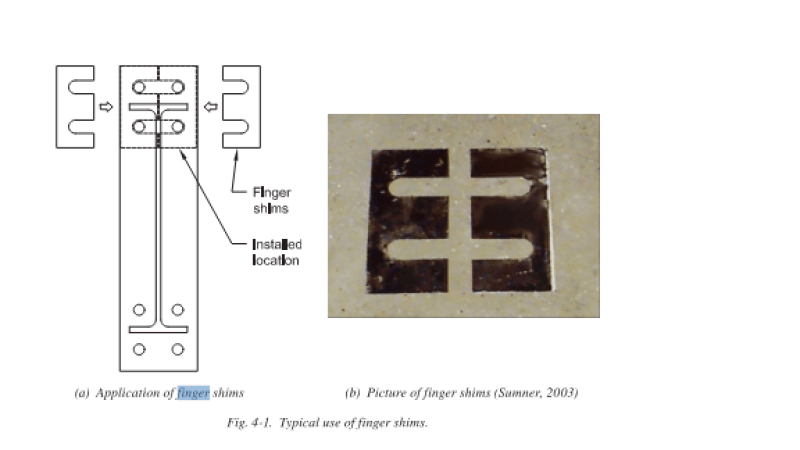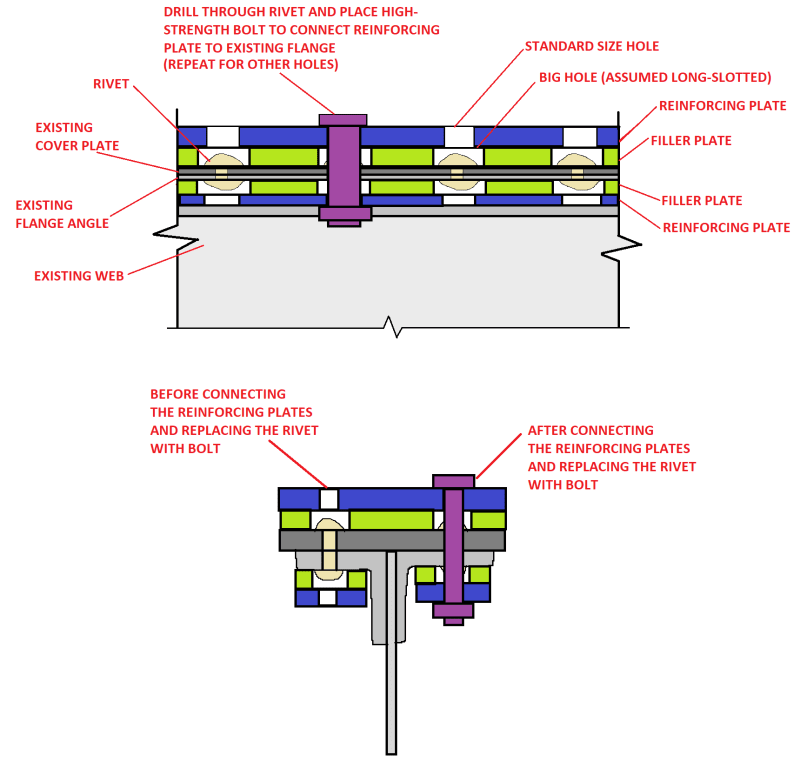StructuralAddict
Civil/Environmental
Hi,
The bolt slip resistance in slip-critical connections is Rn/Ω = [μ Du hf Tb ns /Ω] per Eq. J3-4 of AISC 360-16.
For the splice shown below:
(1) What should I use for (hf)? Is there one filler between the connected parts (hf = 1.0)? Or are there two fillers between the connected parts (hf = 0.85)? Please refer also to Figure C-J3.3 in the Commentary of AISC 360-16 that shows how they defined single vs multiple filler plates.
(2) The filler plates have long-slotted holes, so this will be taken into account by adjusting the Ω factor to become 2.14 per Eq. J3-4. Just wanted to confirm this?
Thanks.

The bolt slip resistance in slip-critical connections is Rn/Ω = [μ Du hf Tb ns /Ω] per Eq. J3-4 of AISC 360-16.
For the splice shown below:
(1) What should I use for (hf)? Is there one filler between the connected parts (hf = 1.0)? Or are there two fillers between the connected parts (hf = 0.85)? Please refer also to Figure C-J3.3 in the Commentary of AISC 360-16 that shows how they defined single vs multiple filler plates.
(2) The filler plates have long-slotted holes, so this will be taken into account by adjusting the Ω factor to become 2.14 per Eq. J3-4. Just wanted to confirm this?
Thanks.



